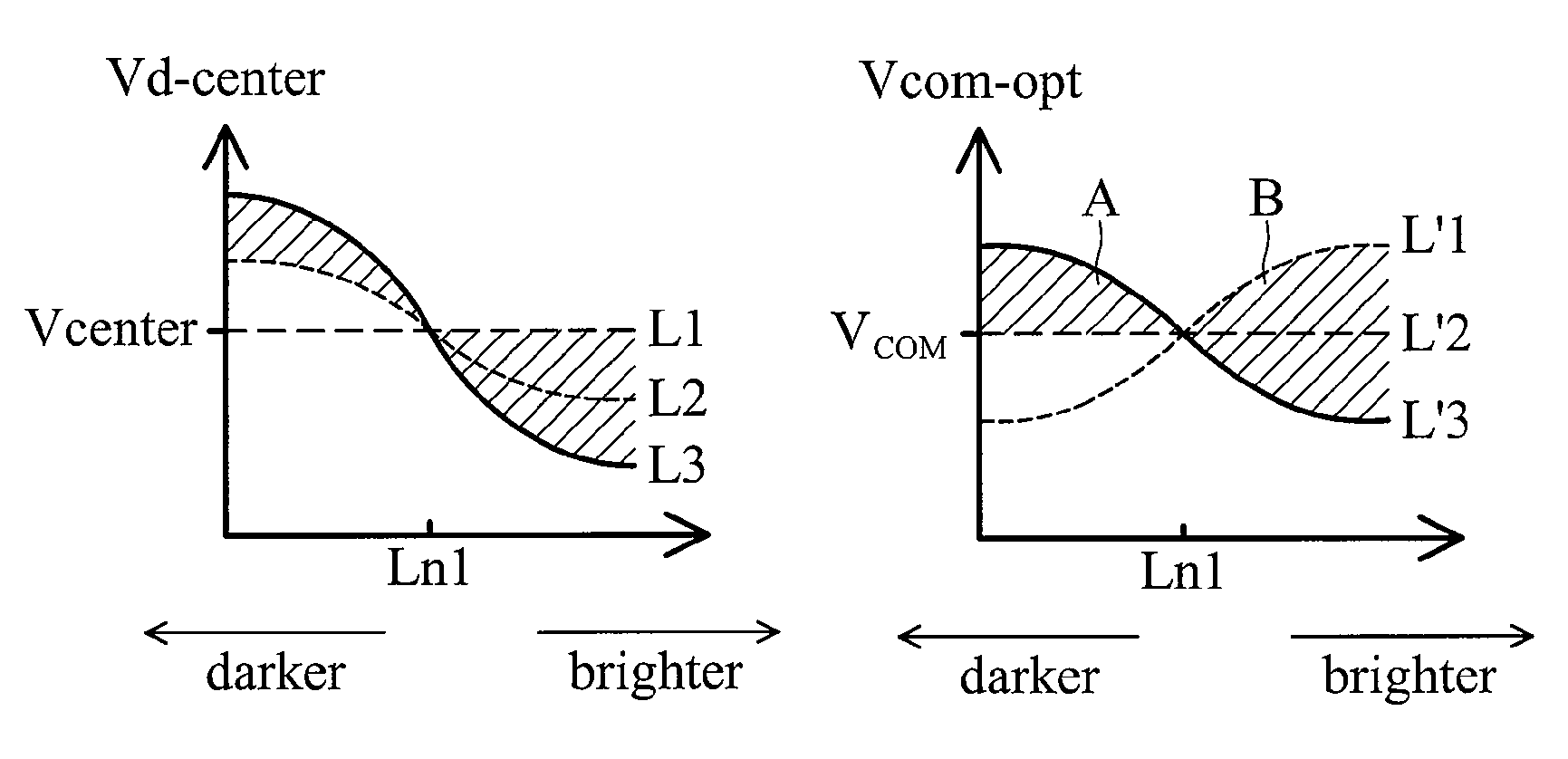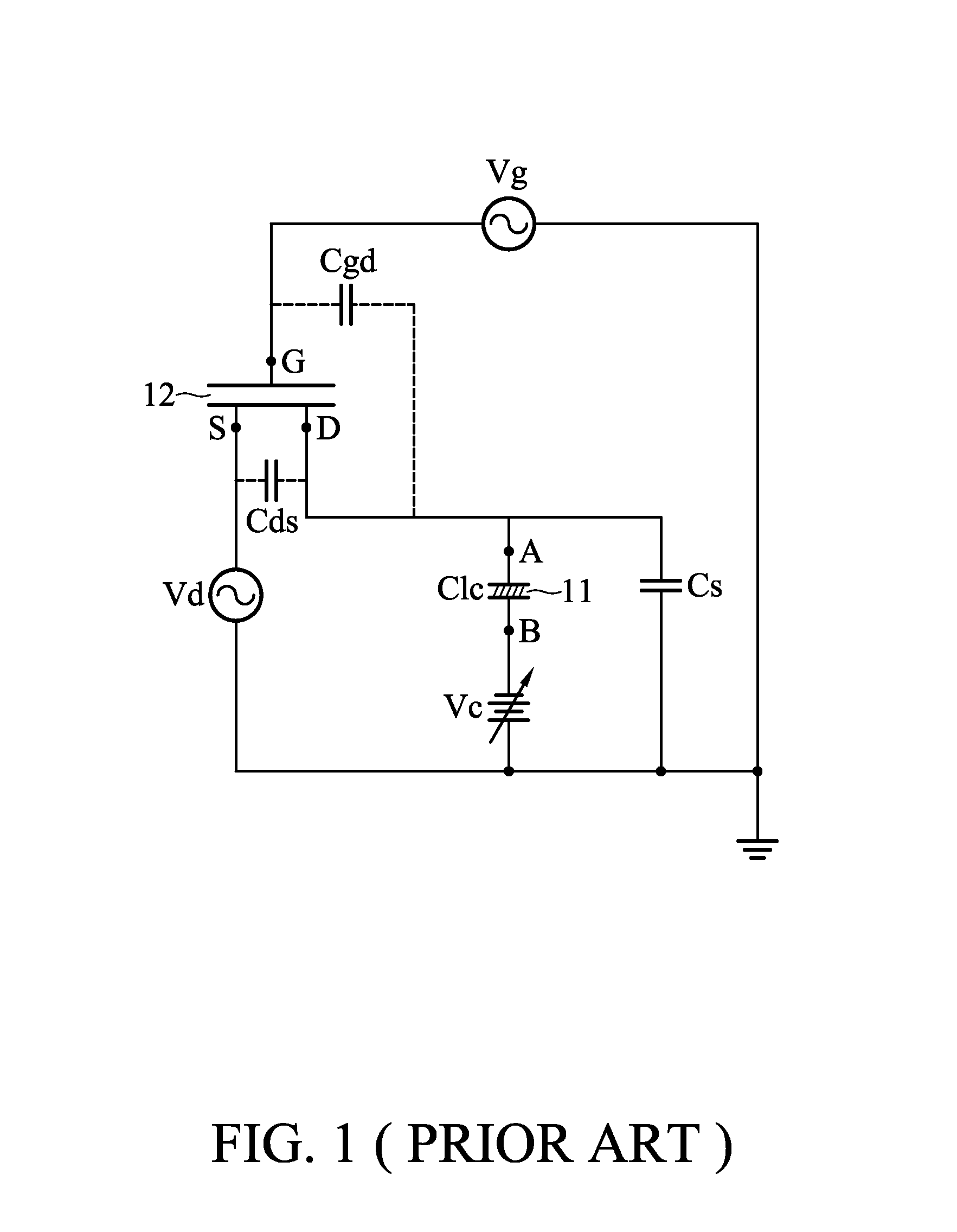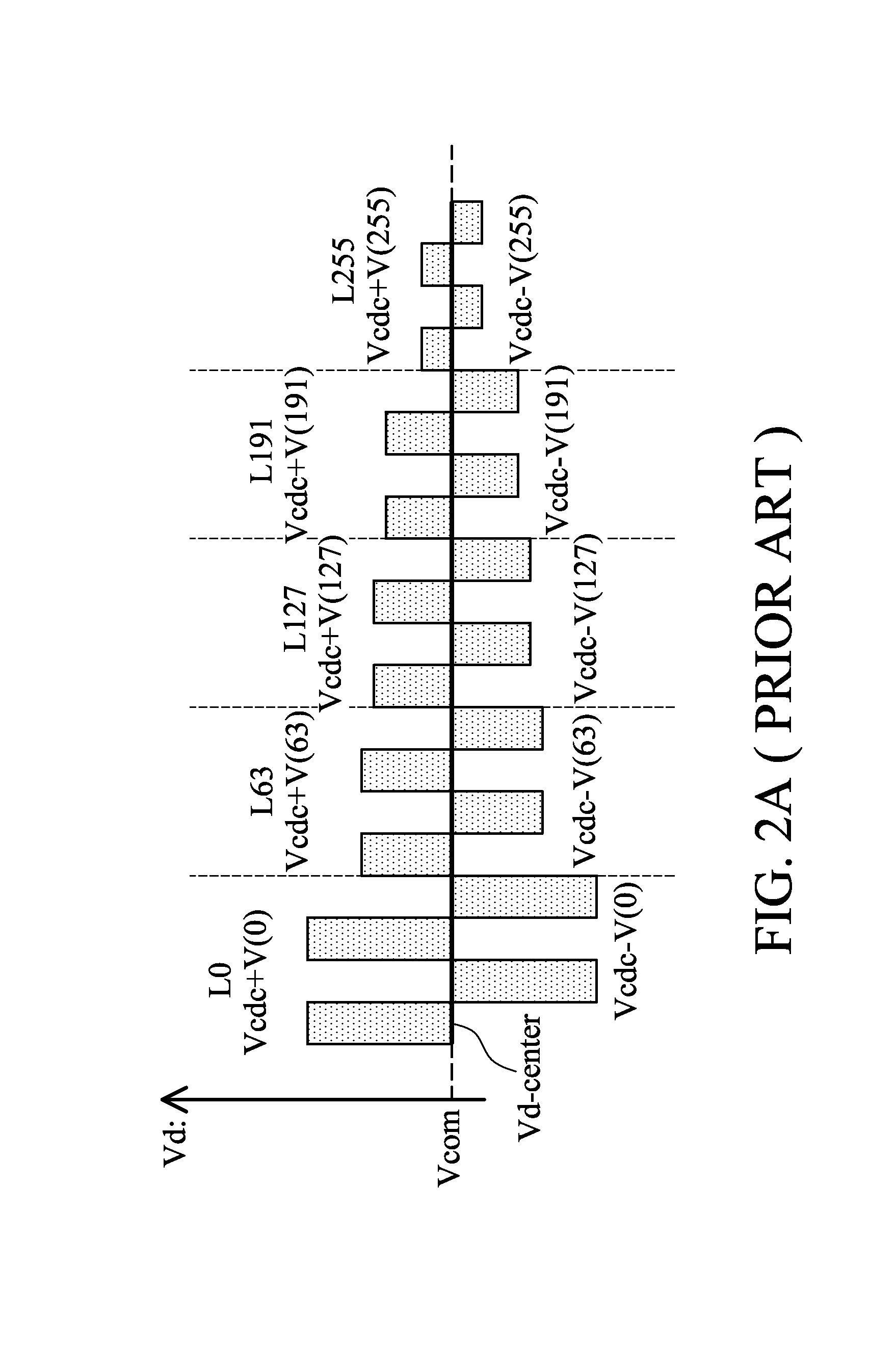Method for driving a liquid crystal display
- Summary
- Abstract
- Description
- Claims
- Application Information
AI Technical Summary
Benefits of technology
Problems solved by technology
Method used
Image
Examples
Embodiment Construction
[0034]The following description is of the best-contemplated mode of carrying out the invention. This description is made for the purpose of illustrating the general principles of the invention and should not be taken in a limiting sense. The scope of the invention is determined by reference to the appended claims.
[0035]The invention provides a method for driving an LCD according to the layouts of a driving circuit, materials of a liquid crystal layer, changes of the leading axle of the liquid crystal and characteristics of positive or negative ions. The method for driving an LCD, according to the present invention, can be implemented for reducing image sticking. Taking the LCD shown in FIG. 1 and FIGS. 4A to 4F as an example, the operating principle of the method for driving an LCD is described in the following
[0036]FIG. 4A shows a relationship curve L1 between the middle-voltage Vd_center of the source signal Vd and the gray levels (various source signals) when the source signal Vd...
PUM
 Login to View More
Login to View More Abstract
Description
Claims
Application Information
 Login to View More
Login to View More - R&D
- Intellectual Property
- Life Sciences
- Materials
- Tech Scout
- Unparalleled Data Quality
- Higher Quality Content
- 60% Fewer Hallucinations
Browse by: Latest US Patents, China's latest patents, Technical Efficacy Thesaurus, Application Domain, Technology Topic, Popular Technical Reports.
© 2025 PatSnap. All rights reserved.Legal|Privacy policy|Modern Slavery Act Transparency Statement|Sitemap|About US| Contact US: help@patsnap.com



